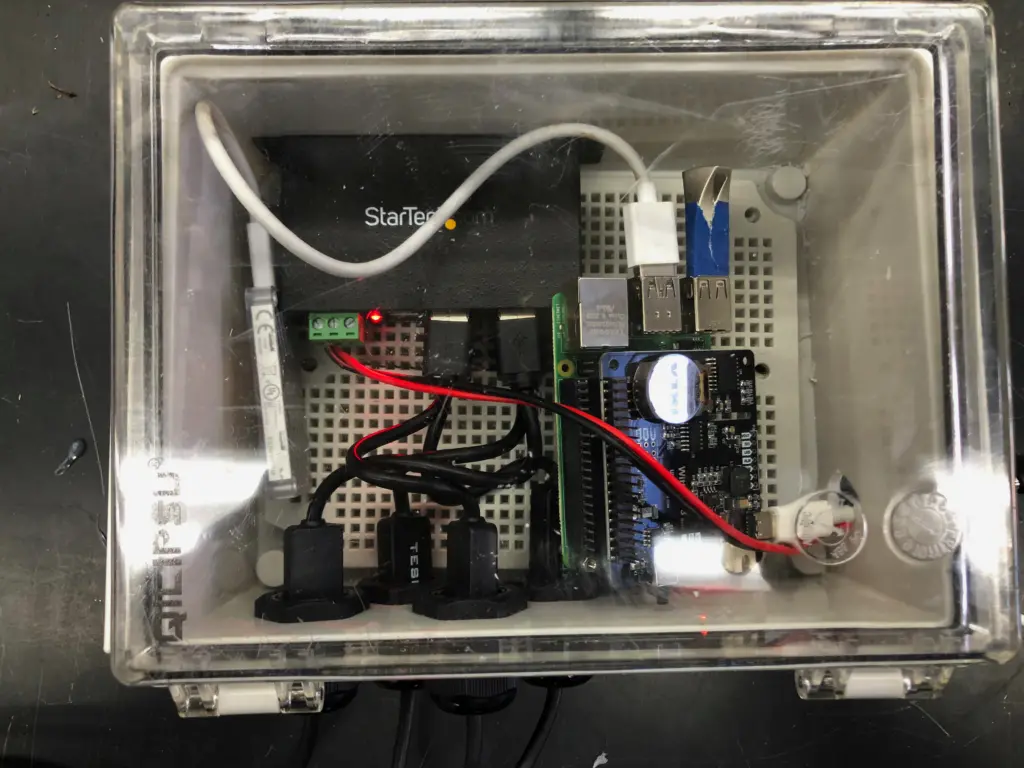For several years, entomologists have rung the alarm bell about insect pollinator species—up to 40 percent of which are considered highly threatened, according to recent studies.
That includes one in four bee species in the United States. Current sampling methods show that these insects are decreasing, however, those methods are labor intensive and make it challenging to accurately assess changes in insect populations.
 Joshua San Miguel
Joshua San Miguel
Joshua San Miguel aims to help improve that data. An assistant professor of electrical and computer engineering at the University of Wisconsin-Madison, San Miguel and UW-Madison collaborators, Assistant Professor James Crall and Professor Claudio Gratton both in the Department of Entomology, are designing a noninvasive system to detect and identify pollinators in the field.
This low-cost, low-power autonomous pollinator sampling, or AutoPollS (Autonomous Pollinator Sampling), system provides researchers a fine-grained understanding of how these species move about and interact with ecosystems.
San Miguel and his electrical and computer engineering colleagues first approached the entomologists to learn whether bee behavior could offer insights into creating large-scale machine learning using tiny, low-power devices. In turn, the entomologists asked San Miguel, an expert in low-power computing, if he could help with another project: developing a low- power, low-cost system to directly monitor the bees.
Typically, to study insects, entomologists use various kinds of traps. While these traps offer a snapshot of insect diversity in a general area, they don’t reveal what flowers the insects visited, how long they spent there, or other environmental information. And traps can harm the very insects researchers care about studying.
Enter the AutoPollS system, which can gather insect information in a non-lethal, unobtrusive way. AutoPollS consists of a group of solar-powered devices, each about the size of a tablet, with four flexible cameras attached. Each camera points at a flower or plant where insects might land, and the system takes periodic snapshots for identification purposes while also recording environmental data. When processed by machine learning algorithms, the data can reveal insect species and how they move through the environment, as well as information about microclimates, the time of day insects visit flowers, and other detailed data.
 For the 2023 field season, San Miguel is developing new identification algorithms for AutoPollS and making the system more energy efficient. Submitted image.
For the 2023 field season, San Miguel is developing new identification algorithms for AutoPollS and making the system more energy efficient. Submitted image.
In summer 2022, the team deployed 20 of the devices at the University of Wisconsin-Madison Arlington Agricultural Research Station, positioning them to monitor wildflowers, weeds and agricultural crops.
While that test showed the system can work, it also revealed some shortcomings. San Miguel says the first iteration of the devices were power-hungry, and random power losses corrupted some of the image gathering. The power issue also limited the system to collecting just dozens of images per hour. “That’s not as fine-grained as we’d like it to be,” he says. “Ideally, we want this sampling every few seconds throughout the entire day to have as much data as possible.”
For AutoPollS 2.0, he and his students are replacing the off-the-shelf Rasberry Pi devices with low-power field-programmable gate arrays, which offer more computing power. They are developing algorithms for inference and image compression that will make the units more efficient and are working on other classification algorithms that can identify images of insect species. San Miguel hopes to have about 50 upgraded units ready for testing in spring 2023.
“Developing technologies that are efficient and effective for monitoring insect biodiversity is absolutely critical, given how important pollinators and other insect are for biodiversity and food production,” says Crall, the primary investigator on the project. “These technological approaches have enormous potential for improving our understanding of how environmental change affects bees and other beneficial insects, as well as informing practices that can support pollinators and the ecosystem services they provide.”
San Miguel says he’s proud to help in a project that could impact bee conservation. He’s also looking forward to learning more about insect behavior through the AutoPollS system— especially how swarms of bees can complete very complex tasks on very small energy budgets. “I think we could engineer systems mimicking how these very cool animals behave, which is an underlying interest for me,” he says.
He says this is the type of collaboration UW-Madison faculty excel at. “I think of myself as lucky. I was in the right room and right brainstorming session to be part of this project,” he says. “I don’t think I’d have the fortune to do this anywhere else. Actually seeing it come to life is very cool.”
Featured image caption: The AutoPollS system is able to take images of pollinators, like these beetles, and will eventually be able to identify species and track their movements through an ecosystem. Submitted image.